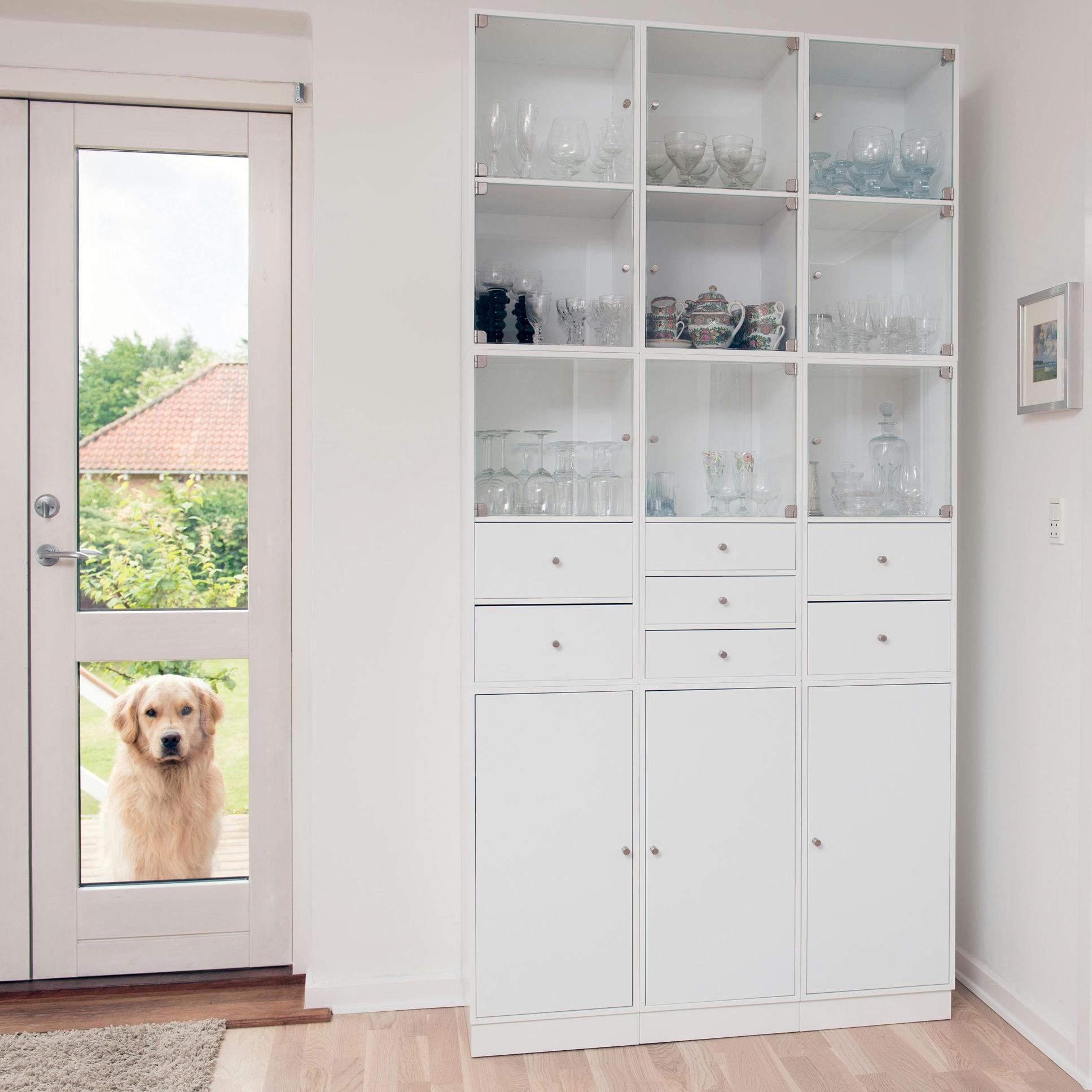Introduction
Installing a dog door can bring incredible convenience to both you and your pet. With the ability for your dog to freely come and go, you reduce disruptions and enhance their quality of life. This comprehensive guide will walk you through everything you need to know about installing a dog door, from the benefits and types available to the step-by-step process of installation.

Benefits of Installing a Dog Door
A dog door keeps your dog healthy and happy, as it promotes exercise by allowing them to go outside and play whenever they want. This type of freedom also aids in mental well-being and reduces boredom, which can often lead to destructive behavior. Moreover, a dog door can ease your daily routine by eliminating the need to be available to open and close the main door constantly. This is especially beneficial for dog owners with busy schedules or those who may not be home all the time. Plus, it ensures that your furry friend has access to relieve themselves whenever the need arises, thus reducing the risk of accidents inside the home.
Types of Dog Doors
When deciding to install a dog door, you’ll encounter several types:
- Manual Flap Dog Doors: These are the most common and affordable type, featuring a simple flap that the dog pushes open.
- Electronic Dog Doors: These use your dog’s collar to allow entry and exit, providing an additional layer of security.
- Sliding Door Inserts: These fit into your sliding glass door track and are an excellent option for renters or those not wanting to cut into their doors or walls.
- Wall-Mounted Dog Doors: These are installed through a wall rather than a door, offering greater flexibility in terms of placement.

Tools and Materials Needed
Before you start, gather the following tools and materials:
– Tape measure
– Pencil
– Drill with drill bits
– Jigsaw or reciprocating saw
– Level
– Dog door kit (including the frame and flap)
– Screwdriver
– Masking tape
– Weatherproofing sealant
Choosing the Right Dog Door
Selecting the right dog door is crucial for a successful installation. Measure your dog’s height and width to ensure the door is the right size. The door should be wide enough for your dog to pass through comfortably and tall enough to accommodate their stride. Additionally, consider your door or wall’s material to ensure the selected dog door is compatible. Compare features like energy efficiency, security, and the ease of training your dog to use it. Investing in a higher quality door will save you from frequent replacements and additional modifications in the future.
Step-by-Step Installation Guide
Preparing the Door
First, choose a door with a flat surface to install the dog door. Ensure the door is hollow or solid core and free from any internal obstructions.
Marking and Cutting the Opening
- Measure and Mark: Use the tape measure to mark the dog’s shoulder height on the door, typically about 2 inches above their back.
- Draw Outline: Use the template included with the dog door kit to draw the outline of the door’s frame on your own door, ensuring it is level.
- Drill Holes: Drill a hole at each corner of the marked outline to create starting points for the saw.
- Cut Opening: Use a jigsaw or reciprocating saw to cut along the penciled outline, creating the opening for the dog door.
Installing the Frame and Flap
- Insert the Frame: Place the outer and inner frames into the cut opening to ensure they fit snugly.
- Attach the Frame: Use the provided screws to attach the frame securely to the door. Start by attaching the outer frame, then slide in and secure the inner frame.
- Install the Flap: Attach the flap to the installed frame according to the manufacturer’s instructions, often involving a hinge mechanism.
Securing the Dog Door
Apply masking tape around the newly installed dog door to protect the door’s surface. Ensure all screws are tightly secured and apply weatherproofing sealant around the outer edges to prevent drafts and moisture infiltration.
Weatherproofing Tips
To protect your home from the elements, use a high-quality weatherproofing sealant around the dog door frame. Choose an energy-efficient dog door with insulation properties to minimize heat loss. Ensure the flap is magnetic or tightly fitting to close effectively and block out cold air or rain.
Once the dog door is securely installed and weatherproofed, it’s crucial to ensure your pet knows how to use it. Transitioning seamlessly to the next section will help you train your pet efficiently.

Training Your Dog to Use the Door
Training your dog to use the door involves patience and positive reinforcement. Start by propping the flap open and encouraging them with treats or toys. Gradually lower the flap and encourage your dog to push through, rewarding successful attempts. Practice regularly and maintain a positive attitude to ensure your dog becomes comfortable with the new addition.
Proper training will significantly contribute to a smooth transition for your pet. Next, we will cover maintenance tips to keep the dog door in top condition.
Maintenance and Care Tips
Keep the dog door clean by wiping down the frame and flap regularly, removing any dirt or debris. Inspect the flap for wear and tear, replacing it if it becomes significantly damaged. Lubricate hinges or any moving parts to ensure smooth operation. Weatherproof seals should be checked periodically and replaced if necessary.
By maintaining your dog door regularly, you can avoid common issues and prolong its lifespan. However, challenges may still arise. The following section provides solutions to some common problems you might encounter.
Common Challenges and Solutions
- Drafts: Ensure the flap closes tightly and use additional weatherproofing.
- Dog’s Hesitation: Utilize treats and positive reinforcement. Keep training sessions short and frequent.
- Misalignment: Double-check measurements and level before cutting. Reinstall the frame if necessary for a proper fit.
Adhering to these solutions can resolve most problems that arise with newly installed dog doors, ensuring both you and your pet enjoy the benefits seamlessly.
Conclusion
Installing a dog door can significantly enhance your pet’s freedom and your convenience. By following these steps, you can ensure a successful installation and a happier, healthier dog. Regular maintenance and addressing any challenges quickly will keep your dog door functioning optimally.
Frequently Asked Questions
What tools are needed to install a dog door?
You’ll need a tape measure, pencil, drill, jigsaw or reciprocating saw, level, screwdriver, masking tape, and weatherproofing sealant.
Can I install a dog door myself?
Yes, most dog doors come with detailed instructions and can be installed with basic DIY skills. Ensure you follow the manufacturer’s guidelines for a successful installation.
How do I train my dog to use the door?
Use treats and positive reinforcement initially to encourage your dog to use the door. Prop the flap open and gradually lower it, rewarding successful attempts. Regular practice and patience are key.
